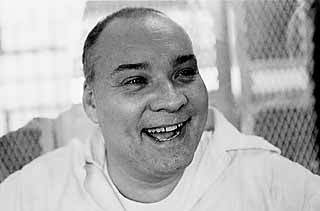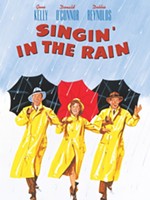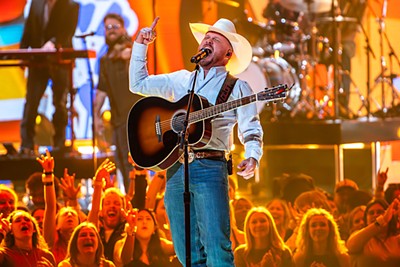American Caste
By Alan Pogue, Fri., Oct. 20, 2000

The Camera Lies
Try this.

Take your driver's license photograph and enlarge it with a black-and-white photocopy machine to approximately 2 by 2 3é4 inches. Trim the copy, place it over one of the prisoner photographs in Texas Death Row, and ask yourself if that person deserves to live. It helps if you print TEXAS, a six-numeral identification number, and a year on your photograph.
A driver's license photo is an official record, an official document that is usually not a very good one. So a driver's license photo is not the image most people would want to represent them to the world. Mug shots -- like driver's license photos -- leave out as much as or more than they show, and therefore convey a false impression of the subject. In the "automated photography" category, photo booth pictures are a good deal better because the person photographed gets to choose the moment and can project something of his personality. There is no choice on death row, where the purpose of photography is to make every subject appear to be what society would like to believe he is. Death row mug shots reinforce the institutional argument that the people photographed do not deserve to live.
There are 222 death row photos in Rick Crawford's Texas Death Row, and the dead weight of 222 bad portraits is a lot of weight. Karla Faye Tucker is an exception, perhaps the only subject in this collection of photographs and official Texas Dept. of Criminal Justice death row case histories who won the battle with the automated lens. All the others fall into the Richard Avedon zoological approach to photography. To search for meaning in these photos is to fall into a trap that would have you believe there is meaning. There is a purpose, but no meaning.
It's not impossible for a photographer to find meaning in the faces on death row. Even crouching and dodging reflection of bad light off bulletproof glass, photographing into powerful backlighting, and using pieces of black paper to alter the quality of light, when the photographer searches for meaning, he finds it. If, that is, the photographer enters into a visual dialogue with the subject. There was never an attempt at such a dialogue when the subjects in Texas Death Row were photographed.
The textual record the TDJC provides of the conviction and execution of these 220 men and two women serves the same purpose as the photographic record. When information is omitted, an incomplete portrait of the subject is drawn. For instance, in execution #209 it is stated that the victim "had been sexually assaulted prior to her death." Yet, further investigation reveals that the victim's last sexual intercourse was 48 hours prior to her murder. Odell Barnes, the man convicted of the murder, was the victim's lover -- so asserting that the intercourse took place at the same time as the murder could only serve the purpose of implicating him. But it was not true. The blood of the victim was on Odell Barnes' clothes -- but only two discrete drops, although the forensic description described a crime scene splattered with blood. A forensic expert also tested the blood on Barnes' clothing and found that it contained 40 times the amount of citric acid that human blood would ever naturally contain. Citric acid lines the inside of test tubes in which blood samples are kept. This and other evidence was brought forward before the execution and presented to the court and Gov. Bush by attorneys Gary Taylor, Phillip Wischkaeper, and Michael Carlton. But the TDJC record is static, so none of this information is included in this book. It exists outside the official record of the execution of Odell Barnes, and therefore lies beyond the scope of Texas Death Row.
Alan Pogue is a documentary photographer who has extensive experience taking photos inside Texas prisons.
Got something to say on the subject? Send a letter to the editor.






